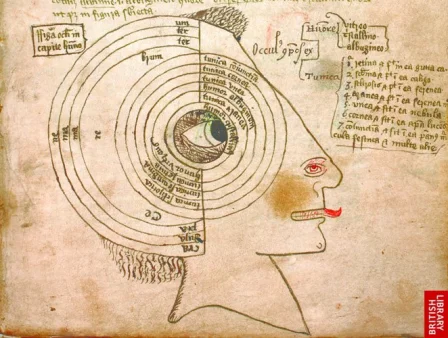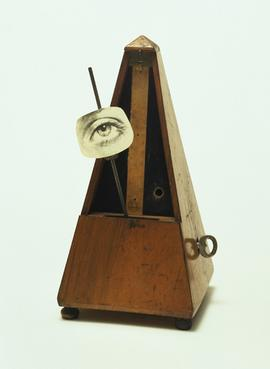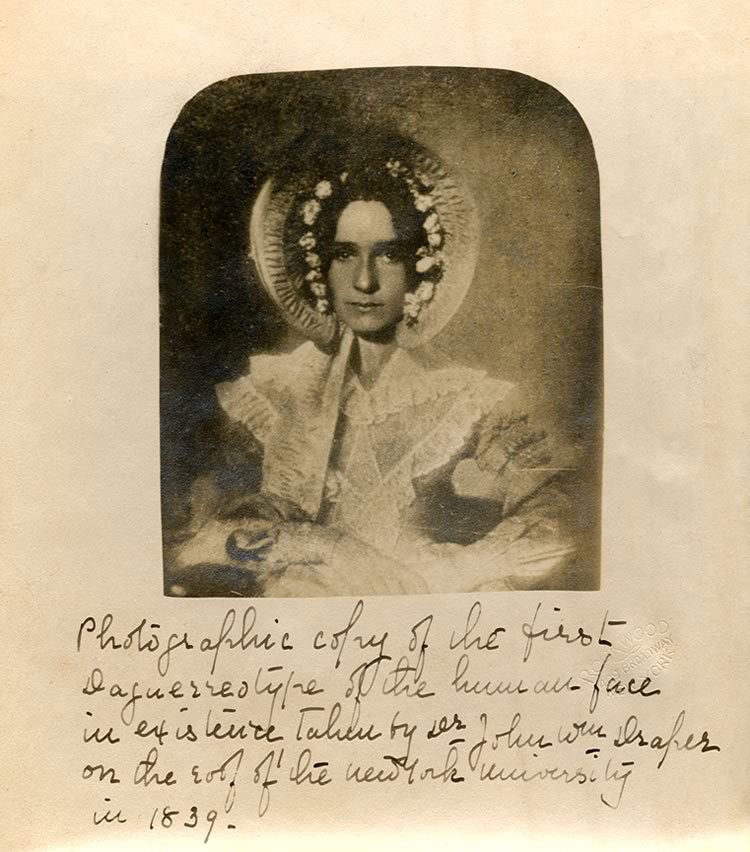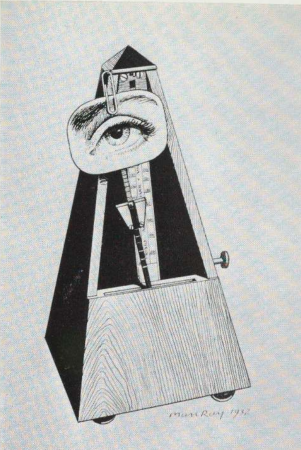created, $=dv.current().file.ctime & modified, =this.modified
tags: Love
Meeting of two eyes is the utmost of isolation/connection. It is impossible for eye mutual eye contact to be intruded by another. It is only between the two parties.
When someone is looking at you, (unless a third party is involved and trusted) the only sense you can get of if someone is watching you, is to watch them back and catch it. You have to catch their eyes as they do it. There might be certain ways, such as dislocating you predicted position (this scenario, you plant yourself at a seat reading a newspaper each day. Then you unpredictably move one day, and look to see if someone’s eyes fixate on the place you should be.)
But for eyes to meet, it cannot be interrupted. It is perfectly mutual.
Dating Show
Watching a dating show where participants are eliminated by being placed on a bench. One guy makes an attempt at a girl and is benched. The next guy comes out, who he is attracted to, but is already eliminated from the previous girl and so not eligible.
His attempts to renew (break the rules) his participation are voiced like this:
I was trying to go back. I was thinking was there any way, I was trying to like get her to make eye contact with me (from the bench) or something so that I could sneak my way off the bench somehow, if she said something like “what if I want him” then maybe, you know.
Modigliani
Believed that eyes are the window to the soul.
Nevertheless, despite his romanticism, Modigliani refused the obvious romantic short cuts of symbols, gestures, smiles or expressions. This is probably the reason why he often suppressed the look of the eyes. He was, at his strongest, not interested in the obvious signs of reciprocal love. But only in how love holds and transports its own image of a loved one. How the image concentrates, diffuses, distinguishes, and is both emblem and existence like a name.
When I know your soul, I will paint your eyes
Medieval Diagram of the Eye
Sir Hans Sloane (1660-1753) was a physician and naturalist and collector of objects. The diagram taken from ”book of Macharias on the eye”, contains the seven tunics and three humors of the eye and the skull, labeled.
The eye is labeled Salaracer, or secret of secrets.

Hans Sloan
It seems Hans Sloan also was the “first to create chocolate milk”
By the 1750s, a Soho grocer named Nicholas Sanders claimed to be selling Sloane’s recipe as a medicinal elixir, perhaps making “Sir Hans Sloane’s Milk Chocolate” the first brand-name milk chocolate drink. By the nineteenth century, the Cadbury Brothers sold tins of drinking chocolate whose trade cards also invoked Sloane’s recipe.
But also note, in actuality,
according to historian James Delbourgo, the Jamaicans were brewing “a hot beverage brewed from shavings of freshly harvested cacao, boiled with milk and cinnamon” as far back as 1494
Object to Be Destroyed

Object to Be Destroyed is a work by American artist Man Ray, originally created in 1923. The work consists of a metronome with a photograph of an eye attached to its swinging arm.
Cut out the eye from a photograph of one who has been loved but is seen no more. Attach the eye to the pendulum of a metronome and regulate the weight to suit the tempo desired. Keep going to the limit of endurance. With a hammer well-aimed, try to destroy the whole at a single blow.
According to Man Ray, the piece was intended as a silent witness in his studio to watch him paint.
Object To Be Destroyed - Man Ray
Cut out the eye from a photograph of one who is loved but is not seen anymore. Attach the eye to the pendulum of a metronome and regulate the weight to suit the tempo desired. With a hammer well-aimed, try to destroy the whole with a single blow.
“The title was Object To Be Destroyed and I really intended to destroy it one day.” He was at a gallery with who had organized the show when youngsters came in and announced that they were protesting against the Dadaists and Surrealists.
On the way out one grabbed the metronome and disappeared with it..
”Afterwards I had an interesting session with the insurance expert… First he offered to replace the cost of the metronome, a trifle. I pointed out that one did not replace a work of art, a painting, with brushes paints and canvas. He conceded the point, since I was a well known artist he would pay the full value of the insurance. Then assuming a more intimate tone, he voiced his suspicion that I might with this money buy a whole stock of metronomes. That was my intention I replied; however I assured him one thing – I’d change the title – instead of Object To Be Destroyed I’d call it Indestructible Object
Rube Goldberg
Underlying this is the idea that something man can do in a very simple, direct way can also be accomplished, through an elaborate roundabout and risky system, by a machine.
Bruno Munari
Bruno created his Useless Machines.
With the “useless machines”, he was interested in exploring the time-space continuum, how to make a work of art that could interact with the environment and change accordingly.
Munari gave back the spring its own unregulated behavior, by adding two more springs in the form of thin rods that support disc, he created a wriggling dance that goes on a while the force of the spring is running down; then it must be rewound. The motor is glorified, not heroically but poetically.
Jean Tinguely
Tinguely’s art satirized automation and the technological overproduction of material goods.
Tingley’s point of departure from the machinic world of order and precision, was disorder. He pits the emancipated machine against the functional one and gives his creations a glorious life of improvisation, happy efficiency and shabbiness, expressing an enviable freedom.
His auto-destructive and auto-creative art machine are among the most engaging ideas of a machine society.
The most important of Tinguely’s self-destroying machines was Homage to New York which destroyed itself in the Sculpture Garden of MoMA in 1960.
A main theme of his thinking has been to ridicule the practical and rational side of the producing machine, and at the same time emphasize its beauty and flow. For many years he has been trying to find a department store that will let him fill its display windows with a series of machines that will systematically destroy the articles that it offers for sale.
The production of articles that nobody really needs but which occupy the ground floors of all big stores, is one of the many outward symptoms of something basically wrong with overproduction and undernourishment.
The machine immediately eats up its output.
Link to original
Dorothy Catherine Draper
Dorothy Catherine Draper was the first woman to be photographed with her eyes open. Her brother was a British/American chemist who took the daguerreotype portrait.
The first exposures, of his female assistant with white flour upon her face to enhance contrast, were not preserved.
For Dorothy, the exposure was long this rule was noted
”the hands should never rest upon the chest, for the motion of respiration disturbs them”
Dorothy was required to pose still, unblinking, for 65 seconds.

Dating App
rel: History of Dating, Calling
I’m realizing that on most photo-focused dating apps (all of them), you’re basically met with a succession of “eye contact” events that lack an actual reciprocated contact.


